Picking the worst years throughout human history is no easy task, as most of it has been undocumented and full of spectacularly bad years. We’ve come a long way from our famine and almost consistently war-ravaged early past, having somehow managed to build a working civilization despite everything nature has thrown at us over the ages.
However, for the years we do have the records for, it’s not that difficult to pick out the lowest times for our civilization; times when everything seemed to be the worst than it ever was with no hope in sight, either due to natural calamities like global pandemics, or man-made reasons like financial crises or war. These worst years in recorded history remind us of the fragility of human progress and development, as well as serve as a testament to our ability as a species to – in a manner of speaking – still make something of ourselves despite growing up in an exceptionally bad neighborhood.
10. 1315
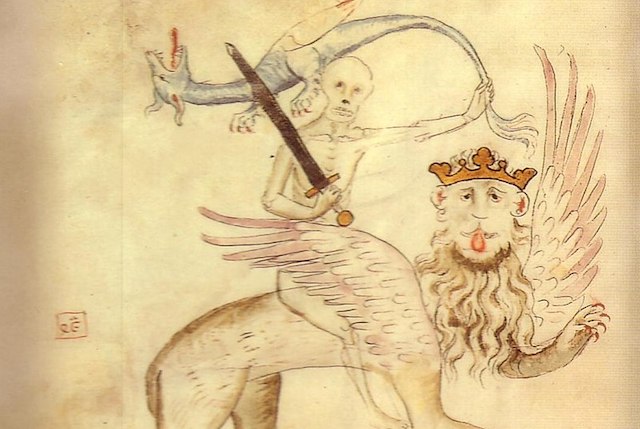
The year 1315 may have flown under the radar of most historians counting down the worst times in human history – as it was hardly a global phenomenon – though for anyone living in Europe, it really was one of the worst times to be alive. It was the beginning of perhaps the worst famine in European history in terms of the ratio of the population affected, triggered by torrential, almost-biblical rains and floods across the continent that severely affected food production and transport. It was made worse by the recent explosion in the population across the continent, as the production levels were already falling way behind what was needed to sustain the number of people that solely depended on farming to survive.
While it was an issue in most parts of Europe, the famine’s worst effects were felt by what’s now the UK, France and Germany. While estimates vary, records suggest that anywhere from 10 – 25% of the continent’s population was reduced directly because of the famine. The famine also brought isolated-yet-devastating outbreaks of diseases to rural regions, as around 10% – 15% of the population succumbed to diseases such as pneumonia, bronchitis and tuberculosis caused by severe malnutrition and weakness. While it was nothing compared to the destruction caused by the Black Death barely 30 years after – which we’d (obviously) talk about in a bit – it was still one of the worst population collapses in European history, making the 1400s an especially crappy century for its inhabitants.
9. 1816

The year 1816 – which we’ve since come to know as the ‘year without a summer’ – may not be much compared to the who’s who of bad times that is the rest of this list, though it was still bad enough to deserve a spot here. While some research points to the eruption of Mount Tambora in 1815 – the largest volcanic eruption on the planet of the last 10,000 years – as the primary cause, records show that the weather had already started to cool off by the beginning of 1815.
While we may never know exactly what caused it, we know that the global average temperature dipped by around two degrees. It led to many isolated-yet-related events across North America and Europe. In New England, the crop failure caused by the cooling resulted in a bulk of the farmers to move west, permanently reshaping the demographic of the country. In Europe, the abnormally cold summer led to a widespread failure of the potato crop, resulting in famine and one of the worst typhus outbreaks in history. There were sporadic incidents of rebellions and food riots in other European countries, too, though thankfully, it didn’t last for a long time.
The dark and gloomy vibe of the year has since been immortalized in quite a few literary works. The setting of Mary Shelley’s Frankenstein, as an example, was directly inspired by the dark and gloomy skies she witnessed during her vacation in Switzerland at the time.
8. 1600

It’s difficult to pinpoint the exact causes behind why the year 1600 was the beginning of one of the worst times in human history, as we have few historical records from that time to say for sure. It was the Little Ice Age, likely beginning with the eruption of the volcano Huaynaputina in Peru in 1600, though recent research points to the massive reduction in population following the arrival of Europeans in the New World as another potential cause. It resulted in abnormally cold weather in many regions around the world, including China, Korea, Japan, almost the entire Europe, as well as parts of Africa and the Americas. Unlike many other periods on this list, this one was spread out almost across the entire known world at the time and lasted for decades, causing widespread social upheaval and suffering.
This global dip in temperatures would form the basis for all the tumultuous events of the 17th century around the world. It caused a dramatic dip in summer temperatures in China, resulting in widespread crop failure and epidemics across the country. That would eventually lead to the fall of the Ming dynasty in 1644 due to a peasant rebellion, fueled in large part by the widespread scarcity of food and social unrest. The same happened in other parts of Asia. Korea, for instance, lost 20% of its population to a drought in 1670.
In Europe, there were frosts during the summer months spread out almost over the entire century, resulting in rebellions, infectious disease outbreaks and famine, which eventually translated into war and social upheaval not seen in the relatively-prosperous years of the past few centuries. In Ireland, civil war and famine resulted in over 500,000 casualties over the course of almost a decade in the 1650s, according to some records.
This was also the century of the Thirty Years’ War across Europe, perhaps one of the most brutal religious conflicts in human history, which was directly fuelled by the hardships of the famine and abnormal temperatures of the ice age. While there are too many long-term effects of this one to count here, all in all, estimates suggest that the diseases, wars, famines and civil wars caused by this global cooling event resulted in the deaths of around one-third of the known global population at the time.
7. 536
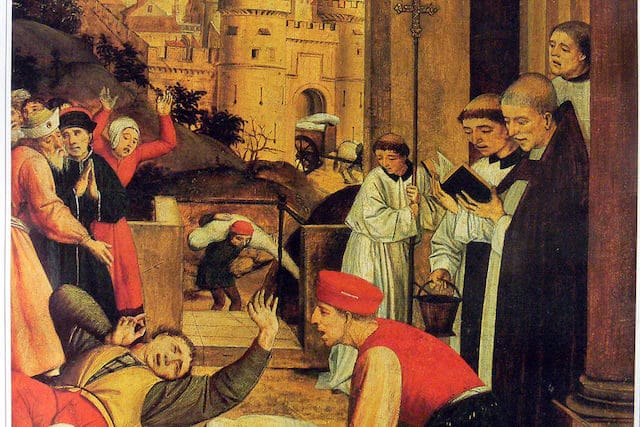
Choosing the worst year in history, despite our best research, is a subjective effort. Many years on this list may have been merely one year in a long series of bad times, or even decades in some cases. According to one Harvard historian specializing in medieval history named Michael McCormick, though, we have a singular, definitive answer to the question ‘what was the worst year in history’: 536.
It was the beginning of a mysterious fog that plunged Europe, the Middle East, and large parts of Asia in a continuous, 18-month fog, causing an almost-permanent dimming of the sun throughout the entire period. Temperatures fell by up to 2.5 degrees Celsius, which was the beginning of the coldest decade in at least 2,300 years. The period was marked by summer frost and snow in places across China and other parts of Asia – causing abysmally low yields and diseases – as well as widespread famine in European regions like Ireland.
If that wasn’t enough, just a few years later in 541, entire parts of Europe were hit by the Plague of Justinian – a bubonic plague outbreak named after the Byzantine emperor at the time. One of the deadliest plagues in history, which was made worse by the ongoing Gothic war, the outbreak would end up claiming the lives of over 100 million people across the empire.
While we may never know the precise causes behind this period of widespread plague, war and famine, some recent research suggests that a massive volcano eruption in Iceland may have been one of the possible culprits. Whatever the reason, the year 536 would go down in human history as the beginning of one of the worst times for humanity, and it’d be centuries before the worst-hit regions would be able to fully recover from it.
6. 1918

The Spanish Flu of 1918 may not have been the worst pandemic in history, though combined with the First World War and the social and political upheaval of the years following it, it definitely was the beginning of one of the worst times to be alive in human history.
While the exact numbers would probably never be fully quantified, the plague caused an estimated 50-100 million deaths around the world – which may far surpass the total death counts of both the world wars combined. It lasted for 15 months and hit almost every major country at the time in three waves, each one deadlier than the last. The worst part was how fast it spread – while the Black Death was spread out over a course of decades in its many isolated waves around the world, the Spanish Flu took all of 15 months to do everything it did. The pandemic came on the heels of one of the most destructive global wars in history, too, making the effects more pronounced than they otherwise would’ve been. In the US alone, it killed around 675,000 people out of a population of 105 million – almost ten times the number that died in the war – and reduced the average life expectancy by around 10 – 12 years.
The year also marked the beginning of decades of unrest for a major part of the world, partly fuelled by the devastation of the pandemic and partly by the events in Russia – where a popular and brutal uprising had just successfully deposed the emperor. It inspired countless anti-imperialist and anti-colonial civil wars around the world, which would end up shaping the world for years to come.
5. 1929
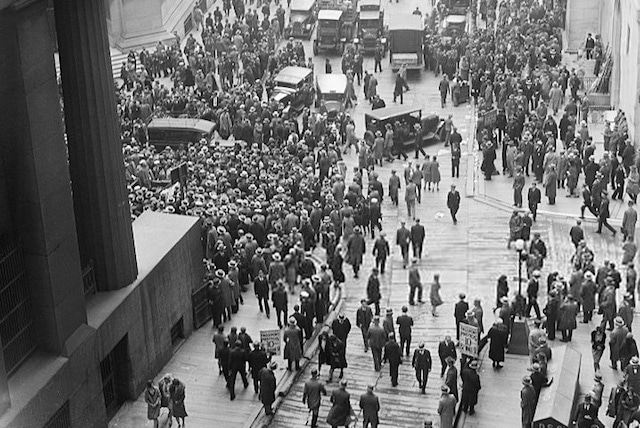
As far as market crashes go, the Wall Street crash of 1929 followed a similar pattern to all the other financial crashes that have happened before or since. Fueled by excessive speculation on market assets that just didn’t reflect the reality on the ground – especially in the US – as well as an influx of cheap credit from financial institutions that allowed the bubble to grow ever larger until it collapsed, it was a textbook example of how global markets have a way of correcting themselves.
What sets it apart from all the other crashes, though, is the scale of the wipeout and the magnitude of consequences that followed. The recession that followed was – taking the size of the economy at the time into account – the largest recession in history for the developed world. By some estimates, unemployment grew to over 20% in the US alone in the years following the crash, and the GDP fell by over 30% during its peak years, dwarfing the next biggest recession in history – that of 2007-09 – by a long shot.
The Great Depression, as it has since come to be known in popular imagination, triggered many of the worst events of the 20th century, and we’re not even talking about its direct effects, like the mass deprivation and years of hardships faced by people in almost every industrialized economy around the world. The recession, combined with rapidly-depleting resources in recently industrialized economies like Germany and Japan, fuelled the oncoming rise of extreme nationalistic and populist ideologies, paving the way for the widespread destruction and suffering of the Second World War – the largest global military conflict in history.
4. 2020
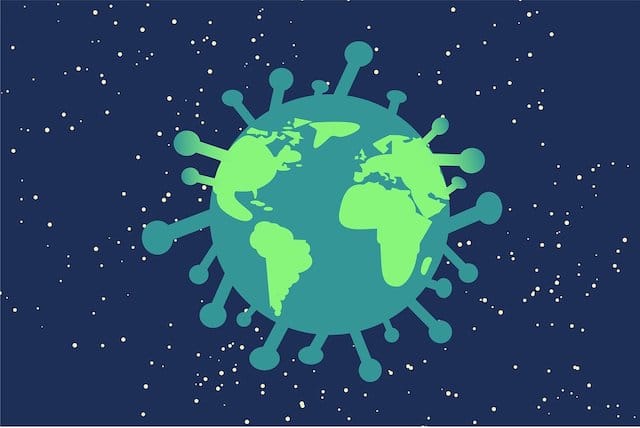
While it may be too early to call it yet, and it may still not match up to most of the other worst years in history on this list, the year 2020 was certainly one of the worst in living memory. As most of the world spent its time locked inside due to the Covid-19 pandemic – in itself one of the worst pandemics in history – the year was marked by many lows not experienced by anyone alive today. The worst part? With a devastating resurgence of the virus in many countries around the world happening right now, the ordeal may be far from over just yet.
In terms of sheer numbers, it’s rather easy to make the case for 2020 being one of the worst times in history. Up to right now, the outbreak has infected a little less than 160 million people worldwide, and over 3.2 million have already died. While those may not seem like huge numbers considering the global population today and particularly-devastating pandemics in history like the Black Death and Spanish Flu, consider that the numbers are still being counted. We’re still reporting over 14,000 deaths to the outbreak everyday, with particularly worrying statistics emerging out of countries like Brazil and India at the time of writing this.
As for its economic impact, many experts – including the IMF – have already called the recession caused by the pandemic to be the worst since the Great Depression of the 1930s, and many countries are seeing a record dip in their GDP’s not seen since the 19th century. The impact has been the most acute in economies largely dependent on global trade and finance. Thankfully, though, with the vaccination drive in full swing in most parts of the world, that is expected to get better sooner than later.
3. 1943
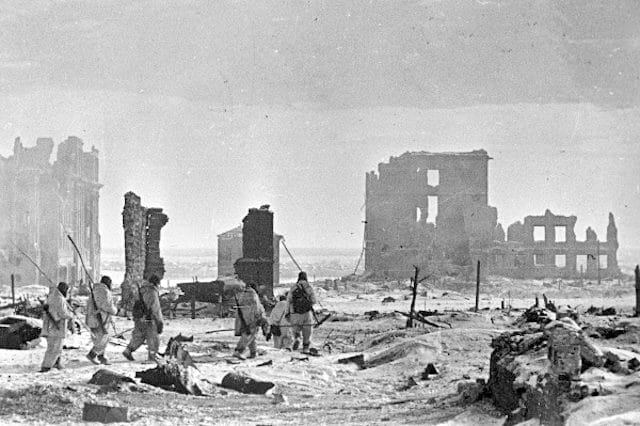
While it’d be immensely inaccurate to pick the worst year of the Second World War – as no year from the largest, most devastating global war we’ve ever seen could be called ‘better’ than any other – 1943 was, without a doubt, when some of the worst events of the war took place.
For one, it was the peak of the Holocaust. By the end of Spring of that year, the genocide had already claimed the lives of around 1.3 million Jewish prisoners from across Nazi-held territory, though that number also included quite a few Romas (gypsies), partisans and Soviet prisoners of war. It was also the year Josef Mengele – the most infamous of all Nazi scientists responsible for some of the most inhumane experiments on the prisoners – was appointed to Auschwitz, beginning arguably the worst phase of the Holocaust yet.
On the other side of the world in India, another lesser-known but equally devastating event was taking place. The Bengal famine of 1943 – caused by the British forces diverting massive amounts of food resources from the region to aid the war effort in the Eastern theater – caused the deaths of close to 3 million people in the state, making it one of the worst humanitarian disasters of the entire war.
The year was also the culmination and peak of the Battle of Stalingrad – easily the largest and bloodiest battle in human history in terms of sheer numbers, with over 2 million military and around 400,000 civilians dead by the end of it. While it was a turning point for the allied forces – as they weren’t really ‘winning’ until this point – the human cost of this single battle was immense, both for Germany and the Soviet Empire.
2. 1492
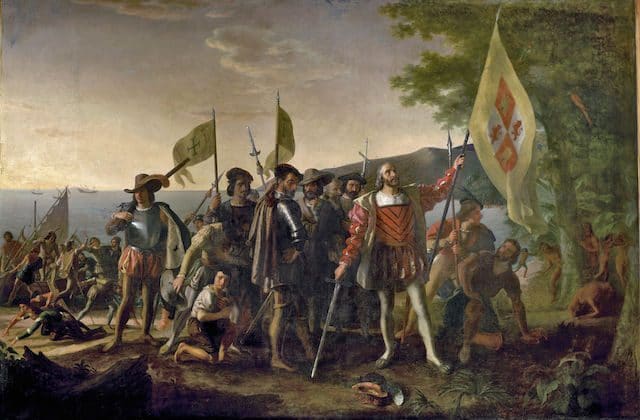
The arrival of Europeans in the Americas is often discussed as one of the most devastating events for the continent’s population, and accurately so, too. However, most of us don’t realize the sheer numbers we’re talking about here, as most estimates are clearly exaggerated or understated, making all of them hard to believe.
If we look at a recent study quantifying the extent of the tragedy, though, it’s clear that the year 1492 – when Christopher Columbus first landed somewhere in the Carribean and paved the way for the colonization of the Americas – marked the beginning of one of the worst periods for humanity. Done by researchers at the University of London in 2019, the study – for the first time – collated all published records of the pre-Columbian population of the continents, and found it to be close to 60 million.
By the beginning of the 17th century, that number would be reduced by around 56 million, as the entire region was now devastated by decades of war, diseases they had no immunity towards – like smallpox, the bubonic plague and influenza – and reduction in arable area due to foreign invasion, as the majority of the population still relied on farming for sustenance. As a proportion of the global population, this was the single biggest reduction of human population in history, as it made up close to 10% of all people living in the world at the time. In comparison, the second most devastating event – the Second World War, which was in itself one of the biggest tragedies we’ve ever faced – reduced the global population by 3%.
The impact of this absolute decimation of the native American population was so huge that it even affected global weather patterns. As the number of people working on farms was reduced by such a massive extent and all of that area was soon reclaimed by nature – combined with the above-mentioned eruption of Huaynaputina in Peru – it caused a dip in temperatures around the world by the beginning of the 17th century, causing famines, disease outbreaks and social unrest from Europe all the way to China and Japan.
1. 1347
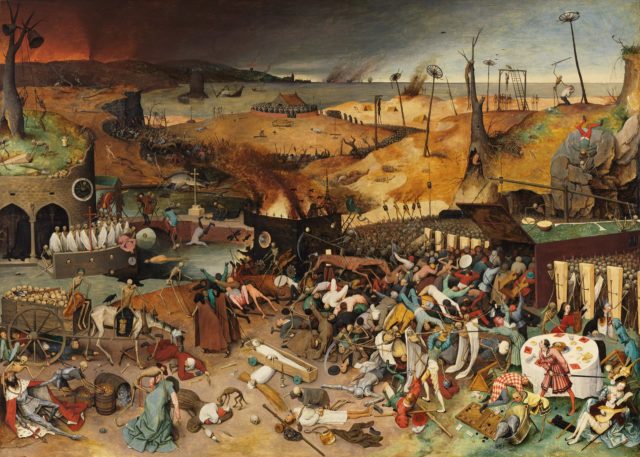
There’s a reason the Black Death shows up on almost every list of the worst times in human history. Apart from the sheer amount of human suffering observed by the people that survived the ordeal, its impact on the future was immense. In many ways – the pandemic shaped up the modern world as we know it.
Caused by the bubonic plague – which had already killed millions and thrown entire parts of Europe into chaos back in the 6th century in the form of the Justinian Plague – the Black Death showed up in Europe again in 1348. While its introduction to the continent is still a matter of debate, some research suggests that it came via intentional biological warfare waged by the Mongols during the Siege of Caffa in 1346, resulting in the beginning of plague in 1347.
While we may never know that for sure, what we do know is the absolutely decimating impact the disease had on the European population. By some estimates, it killed over 50 million people, which was about 60 percent of the entire continent’s population at the time. That doesn’t mean that it was restricted to Europe, as there have been sporadic reports of the disease decimating entire villages and towns in eastern regions like Persia and China, too. Thanks to the Mongol wars of conquest in full swing across almost the entire region of Asia and the Middle East at the time, though, records from that era are scarce and mostly unreliable.
While the peak of the outbreak lasted for about six years, the outbreak wasn’t fully over for many more centuries to come, with isolated-yet-horrifying cases of resurgence reported across Europe till as late as the 17th century. The plague had a far-reaching impact on the politics and social order of the continent, some of which may even be called ‘positive’ in hindsight. Though for those that witnessed it firsthand, it truly was one of the – if not the – worst times to be alive in human history.